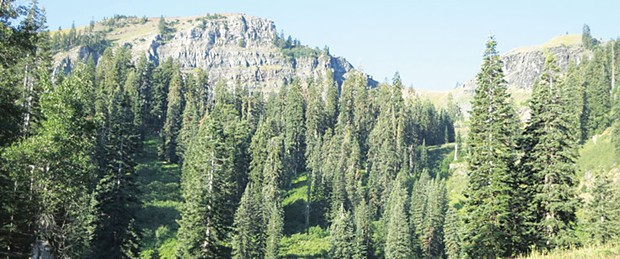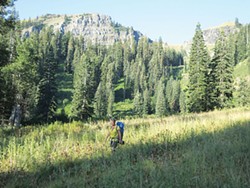[
{
"name": "Top Stories Video Pair",
"insertPoint": "7",
"component": "17087298",
"parentWrapperClass": "fdn-ads-inline-content-block",
"requiredCountToDisplay": "1"
}
]
Ask Yahoo Maps for directions from Crescent City to Fort Jones, and you'll be sent on a 180-mile semi-circular trek across State Route 199 and down I-5. You can, if you have the time, cut it down to 140 miles on backroads, but a focused crow could simply fly 70 miles due east. Such are the topographical barriers of the Siskiyou and Marble Mountains. In the early 1850s, a dearth of roads and trails led the towns of Crescent City and Yreka to contract for the construction of a coast-to-interior pack route. The initial impetus came from the need to supply placer miners who had flocked to the Klamath and Scott Valleys following John Scott's discovery of gold at Scott's Bar in 1850. The route would also service the short-lived (1852-1858) military post of Fort Jones, 20 miles southeast of Yreka.
The man contracted to survey and build the trail was none other than the notorious "Indian killer" Ben Kelsey (1813–1889), one of the founders of Arcata in the 1850s. Kelsey probably did more to sour relations between Europeans and Native Americans in Northern California than anyone before or since. (See "Ben Kelsey: Arcata Founding Father, Trail Builder, Indian Killer," Feb. 13.) Despite this, he was hired to construct a pack trail through the Siskiyou Mountains from the Crescent City harbor to Ferry Point on the Klamath, 12 miles downstream from Happy Camp, thence over the Marble Mountains to Fort Jones.
In one intense construction season during the summer of 1855, Chinese laborers hired by Kelsey built a trail from Crescent City to Ferry Point. A fresh crew from Yreka completed the trail before the winter snows set in. (There's some question as to whether Kelsey or the army built the eastern leg of the route.) Soon, 20 to 70-mule pack trains were trudging from the coast to Fort Jones and back, making the round trip in about three weeks at 10 to 12 miles per day. According to local environmentalist Haven Livingston, mules are excellent pack animals because "unlike a horse's scraping hoof, a mule's gait stamps straight down with all its weight, making it the ideal weight-bearing beast for the narrow and winding trail that was the original Kelsey route."
The modern route, aka the "Kelsey National Recreation Trail" shown on U.S. Geological Survey maps, is unmarked or unmaintained for much of its length, particularly through the Siskiyou Wilderness. According to an experienced hiker I met on the trail who had walked the entire route last year, much of the route follows a labyrinth of poorly mapped logging roads. Several long and steep sections are without water.
Two sections, however, are in good shape and follow the 1855 route. On the west side, a 7-mile section between Boulder Creek and Big Flat Campground was officially opened in 2011; the trailhead is 9 miles east of State Route 199 on South Fork Road. On the east side, an 8-mile, semi-maintained section of the old trail in the eastern Marble Mountains follows Kelsey Creek as it climbs 4,000 feet from Bridge Flat on the Scott River Road to Paradise Lake on the Pacific Crest Trail. (The original and now overgrown route cut off north from Kelsey Creek up Packers Valley to the Elk River via Titus Gap, then down to Ferry Point.)
Despite the unsavory reputation of the man for whom the trail is named, the two sections noted above are gorgeous, passing through primeval forest, steep gorges and alpine meadows. Hiking them today, it's hard to imagine that the original trail was an efficient "mule highway" which linked the coast and interior of Northern California well over a century ago.
Barry Evans ([email protected]) spends part of every summer in the Marble Mountains, our backyard paradise.
Comments (3)
Showing 1-3 of 3
more from the author
-
A Brief History of Dildos
- Apr 11, 2024
-
Eclipse!
- Mar 28, 2024
-
The Little Drone that Could
- Mar 14, 2024
- More »
Latest in Field Notes
Readers also liked…
-
Trouble on the Line: The Reality Part 2
- Nov 3, 2022


































